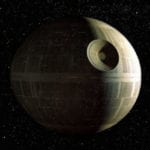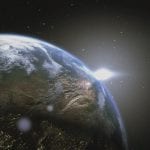 Miscellaneous
Miscellaneous  Miscellaneous
Miscellaneous  History
History 10 Huge Historical Events That Happened on Christmas Eve
 Music
Music 10 Surprising Origin Stories of Your Favorite Holiday Songs
 History
History 10 Less Than Jolly Events That Occurred on December 25
 Weird Stuff
Weird Stuff 10 Funny Ways That Researchers Overthink Christmas
 Politics
Politics 10 Political Scandals That Sent Crowds Into the Streets
 Weird Stuff
Weird Stuff Ten Bizarre Facts About The Doge Meme
 Our World
Our World 10 Ways Your Christmas Tree Is More Lit Than You Think
 Movies and TV
Movies and TV The 10 Coolest Stars to Set Sail on The Love Boat
 History
History 10 Things You Didn’t Know About the American National Anthem
 Miscellaneous
Miscellaneous Top 10 Things Crypto Was Supposed to Change & What Actually Did
 History
History 10 Huge Historical Events That Happened on Christmas Eve
 Music
Music 10 Surprising Origin Stories of Your Favorite Holiday Songs
Who's Behind Listverse?

Jamie Frater
Head Editor
Jamie founded Listverse due to an insatiable desire to share fascinating, obscure, and bizarre facts. He has been a guest speaker on numerous national radio and television stations and is a five time published author.
More About Us History
History 10 Less Than Jolly Events That Occurred on December 25
 Weird Stuff
Weird Stuff 10 Funny Ways That Researchers Overthink Christmas
 Politics
Politics 10 Political Scandals That Sent Crowds Into the Streets
 Weird Stuff
Weird Stuff Ten Bizarre Facts About The Doge Meme
 Our World
Our World 10 Ways Your Christmas Tree Is More Lit Than You Think
 Movies and TV
Movies and TV The 10 Coolest Stars to Set Sail on The Love Boat
 History
History 10 Things You Didn’t Know About the American National Anthem
Top 10 Times Sci-Fi Forgot to Use Science
Science fiction is supposed to show us a futuristic world where science has advanced so far ahead that, in some ways, it can almost seem like magic. But what sets it apart is that it still tries on some level to give us a plausible explanation for how science, far, far in the future, could have achieved such extraordinary things—even if it is currently beyond our means or understanding. However, sometimes, the people writing sci-fi forget that they are supposed to at least attempt to explain things and end up accidentally writing space fantasy or futuristic fantasy instead.
Related: 10 Weapons That Belong in Science Fiction
10 “Danger Is Real, Fear Is a Choice” Is Not Scientifically True
After Earth (2013) is a movie that is mainly known for having Will Smith in it and also for being the movie that caused Jaden Smith to quit acting. He also considered legally leaving his parent’s influence because he felt so betrayed by his dad leading him to such a terrible movie. Regardless of its success, it was a big-budget sci-fi project with heavy involvement from Will Smith. It focuses on Cypher Raige (Will Smith) and his son Kitai (Jaden Smith) getting stuck on a hostile alien planet. After that, the plot just involves them working together to escape.
Cypher gets hurt early on, and Kitai has to take over and use his dad’s words of wisdom and calm guidance to get them through. During the trailers, the money quote that is supposed to teach young Kitai to be brave is that “danger is real, fear is a choice.” It’s in most of the advertisements, and it is completely contrary to science.
While it is true that allowing fear to control you is a choice, there is no question that fear is an instinctual response that we cannot control. Furthermore, some critics argued that this bit of non-science is part of Scientology philosophy and felt the creators should have been more upfront about the connection. [1]
9 A Wrinkle in Time Doesn’t Understand What a Tesseract Is
A Wrinkle in Time (2018) is a popular children’s novel that has been made into a movie multiple times now and heavily features the tesseract, also known as a hypercube, for interdimensional travel. Now, the funny thing about this is that Wrinkle constantly gets the concept wrong. It describes it more like a wormhole.
Madeleine L’Engle even goes so far as to describe a rope with a spider on it being pulled taut to bring it from one end to the other, which is just a standard wormhole. In her defense, she is not the only one to get this concept wrong, as Marvel cannot seem to get it right, either.
The difference is that a hypercube or tesseract is a specific concept of a fourth-dimensional cube that folds and unfolds to get you from one palace to another very quickly. You could argue it is almost like a sub-type of wormhole, but it is not quite the same concept.
The tesseract is probably best illustrated by the movie Interstellar (2014), where he uses a wormhole to enter a tesseract, but it is different from the concept of a wormhole inside — it is instead a strange fourth-dimensional space, cube-like space. [2]
8 The Star Wars Parsec Mistake Has Required Multiple Stories to Fix
Star Wars (1977) is already known for being controversial among sci-fi fans in the first place as to whether it is even technically sci-fi. Some argue that most sci-fi technology is so advanced that the explanations are mostly window dressing anyway. Others say that you need to at least try to explain your tech, and Star Wars barely tries. Regardless, if there is one thing that gave more fuel to the fire than anything else, it is when Han Solo claimed that the Millenium Falcon could make the Kessel Run in less than twelve parsecs.
The critics argued that Han was trying to make his ship sound fast and that twelve parsecs is a measure of distance and thus has nothing to do with speed or time. This controversy took so much hold in the community that back in the days of the old expanded universe, a book series about Han Solo was written where they fixed the whole problem.
Making the Kessel Run in a lesser amount of parsecs was now about taking a faster but more dangerous route and showing your skill as a pilot. Then, just to be sure, when the EU was trashed, they put it in the new Han Solo movie.[3]
7 Futurama’s Heads in Jars Almost Make Sense Until It Doesn’t
Futurama is a comedy and also a cartoon, but that doesn’t mean it is not also sci-fi. The show uses time travel as the basis for its entire plot, and the science fiction concepts used in the show are the big draw for watching it. In fact, if anything, it is a cartoon parody of Star Trek if it is based on anything. And while it may be an animated parody, that doesn’t mean it doesn’t pride itself on explaining its science.
And this is exactly why it is weird that when it comes to the whole heads in jars things, especially the part involving people who should have been long dead before the technology was created, they pretty much just give up on any serious attempt at an explanation. It involves time travel, but unlike other concepts in the show that involve that element, it isn’t very clear what is going on here.
We are told that a man who is now benefiting from them created the technology. We know that some kind of powder that is used to keep the heads alive has some sort of time-travel effect, but that still doesn’t explain how we have dead presidents from before this guy’s time in jars.[4]
6 One Way or the Other, the People in Wall-E Are Doomed
In Wall-E (2008), at the very end, they finally override the autopilot, who is trying to save them all from Wall-E and get back to earth… to their doom. You see, the ending makes it sound all fun and cutesy, but the fact is that these humans are actually in pretty serious trouble. They are used to living on a space station for generations and having robots take care of their every need. They are clinically obese, lazy, and spoiled—hardly the types who are going to survive colonizing a planet.
However, if it were just being overweight and spoiled, it might be something they could overcome, but it is worse than that. These humans have evolved to be blobs that float on hover platforms and don’t do much of anything physically. You cannot reverse that much evolution overnight, and they are not going to be able to survive outside of those conditions.
Just for starters, these people have evolved to spend almost all their time sitting down, but this would straight up kill us, which means they have spent some serious time evolving away from the baseline species.[5]
5 We’re Lucky The Matrix Robots Don’t Realize We Won’t Work as Batteries
In The Matrix (1999), the robots win a war against the humans and take over the world. According to Morpheus, the reason the robots put us into a dream instead of just killing us all is because we provide energy for them—we are used as batteries, which is about as demeaning as it gets. It makes for a great plot, and it sounds terrifying, especially with the graphic visual of thousands of robots harvesting humans.
The problem is that the entire plot of The Matrix falls apart here because this wouldn’t work. Morpheus tries to cover it up by saying that it also involves a “form of fusion.” However, the only way this works is if Earth is such a dead rock that the surviving humans are the only thing left that is biological at all. And some form of fusion mixed with them is the only way to keep things going.
Otherwise, even twisting science to make it sound like it could work still leaves it as a wildly inefficient method that wouldn’t make sense for an advanced race of robots to use, as science says it should cost more energy than it gains.[6]
4 Navigating an Asteroid Field Would Actually Be No Big Deal
In The Empire Strikes Back (19980), Han Solo famously shows how recklessly daring he is by “actually going into an asteroid field” even when the odds were against him so badly that he didn’t even want to hear them. Many of the tie fighters sent for them are destroyed, and the scene is played dramatically, showing just how dangerous it can be. Unfortunately, this has only given fuel to the fire that Star Wars isn’t very good at being science fiction, as this is just a complete load of malarkey.
Due to the way celestial objects tend to interact with each other based on gravity, they don’t tend to group up that close at all. You could pretty much sleepwalk through an asteroid field as a pilot. C-3PO is incredibly wrong here, and it calls into question all his usual bleating warnings. The fact is they are spaced so far apart that it simply is not dangerous in the slightest to navigate an asteroid field.[7]
3 The Editors of Independence Day Cut the Scene That Explained Its Biggest Plot Hole
In the finale of Independence Day (1996), Jeff Goldblum goes up with Will Smith to destroy the alien spaceship by loading a virus into it. Considering this was a time when computers were starting to get big, and there were tons of nerds who could have corrected such errors, a lot of computer scientists had quite a problem with this scene. They argued that there would be no way a virus we made would be compatible with the alien system and that Goldblum could not have had enough time to design one, considering how late he gets involved with the government directly.
The sad thing here is that the writers were quite aware that this would be a problem and had a scene early on where Goldblum intercepts a signal from the aliens before the invasion and starts working to find a way to counter their software. While this may still slightly stretch the bounds of reason, he is an MIT genius, and it is a movie, so at least with the deleted scene, we would have some kind of explanation.[8]
2 Time Travel Writers Nearly Always Forget Linguistic Science
One of the hardest things to believe about time travel movies is not even the time travel itself but how easily people tend to fit into different periods. Many movies will make a few comical scenes about learning slang or something of the like, but even going back just a hundred years or so would require more than just slang to fit in. Even if you go back to recent periods like the time of Sherlock Holmes, it is clear from the very style of talk that even if you were able to understand them, you would need a lot of practice to not stick out like a sore thumb.
However, as you go back further in time, you will find it even more difficult even if the people speak the same language as you. Going back to the 15th century, for example, people still spoke a very flowery form of Middle English that would sound like another language to us.
As time went by, the language would continue to evolve and become easier, but that doesn’t mean it would be easy. Go back a few hundred years to about 1150 or earlier, and everyone would still be speaking Old English, which would just leave you without a way to communicate.[9]
1 The Scientists in Prometheus Are Bafflingly Stupid
In Prometheus (2012), the Alien movie that isn’t an Alien movie, we follow a group of scientists sponsored by a rich corporation who are going to explore an alien planet. This planet could have all kinds of artifacts, relics, or other links to humanity’s past or even origins. This, of course, is of great excitement to all the scientists and others aboard. For this reason, they make an expedition of exploration pretty much the moment they land on the planet, and everyone is super keen on learning all there is to know.
However, despite their excitement, you would expect a group led by scientists to be a bit smarter about their actions on an unknown planet, but they don’t seem to care at all. They take off their helmets “because the planet is terraformed,” even though they could easily get a Xenos disease or spread one through the entire planet.
Later on, without using proper sterile procedures, a scientist touches a black alien goo that turns out to cause them all kinds of problems. The only thing that makes sense here is that due to the corruption of the corporation, they brought profit-driven scientists who are completely incompetent and willing to sell out, as no real scientist would be this dumb.[10]








